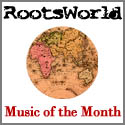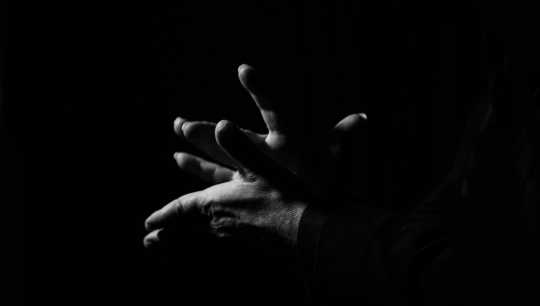|
The craggy black and white photo on the pack gives a clue about the cragginess of the music within, and indeed of Tomás de Perrate’s singing. This isn’t the flamenco of dazzling guitar and dance. Perrate (Tomás Fernández Soto), who is of an Andalusian gitano flamenco family, has long focused on the emotion of cante jondo, ‘deep song.’ After mostly listening to a variety of rock and other musics, but conditioned by what he heard in his family, he took up flamenco singing relatively late, and has taken an individual, non-mainstream path within it
His third album, the first in eleven years, is his most extreme statement to date. Much of the material on it comes from 16th and 17th century sources, while the title track is an Afro-Colombian song accompanied by palmas (clapping), shouts and rough group singing. He recorded this material as demos, but when producer Raül Refree heard them he wanted to work with Perrate on making them an album. Refree comes from a rock and pop background but is currently lauded for his work with Iberian roots musicians such as his collaboration with Portuguese singer Lina.
In the opening “Boa Doña, chacona de negros y gitanos” deep male group chanting over an organ drone suddenly stops, giving way to Perrate’s raw vocal over an almost typical flamenco guitar rhythm, but with a bass-line and interludes that show this is something different. Then comes the aforementioned title track, which is definitely not of the flamenco canon - more like an African work-song.
“Yo soy la locura,” a 17th-century folia, is a low moan over an insistent piano note, joined by scraping double bass, developing with three big repeated chords into something dark and frightening, suddenly cut off.
“Si algún día” is a seven-minute set of seguiriyas (a specifically Romany form of cante jondo) with just Perrate’s keening voice and Alfredo Lagos’s flurries of rasgueado guitar.
“Noche Oscura” begins with ominous grinding bowed bass, swelling as Perrate’s lamenting soars joined by interjections of female voices, developing into an almost filmic pattern before giving way to gradually thinning multiple harmonics from organ, bass and sax.
Five tracks in, and so far so good; challenging and interesting. But then “Arde la casa de Cupido” offers a perky little guitar pattern that repeats, over and over to the point of some irritation, with a big bass drum thump, interspersed with Perrate vocals that only sometimes seem to have much connection to the music.

|
|
The Sephardic romance “Melisenda insomne” has lots of reverb, with guitars and distant female voices. At this point, the unremitting, agonised nature of Perrate’s singing is beginning to pall. If this were a vinyl album, the first side could have ended a track or two ago, giving a breather before the second side. So, let’s try that and pretend one has put on side two first. Then we get a fresh start at track eight. “Los fonemas” begins with an almost silent high organ drone for half a minute, then a deep drone. The voice enters, agonised as before, with thumping drum, breaths The organ drone continues and gets louder, several notes shifting within it, bearing only slight relation to, or awareness of, the vocal. Not much in the way of ideas not already present on earlier tracks.
“No hay que decir el primor” has an opening guitar riff, then the voice without much differentiation in approach from preceding tracks, bowed bass, agaiin that thumping percussion, the opening guitar riff repeating in interludes in a way that harks back to the guitar catch in the earlier “Arde la casa de Cupido.”
“Soleá sola” is more like a standard guitar and vocal soleá, with guitarist Paco de Amparo and Perrate's voice responding to one another in a conventional flamenco. De Amparo, a well-known player of bulerías, is also the guitarist in the eight-minute closer, “Bulerías de la base,” which is again a more familiar form of flamenco, with guitar, palmas, stamping and jaleos (encouraging shouts), though surprisingly its long list of credits includes Peggy Lee.
So, while the ‘virtual’ side two has the rough wild soleá and bulerías, the most effective and new approaches are in the first five tracks of the album.
Photo: Claudia Ruiz Caro
Find more about the artist online.
Further reading:
Coloma Bertran - Principis
Magalí Sare - Esponja
Os d'Abaixo - Somos A Pedra
Ann O'Aro - Ann O'aro

A special download for all subscribers to Music of the Month.
All current subscribers can receive this recording as a bonus. If you have not done so already, drop me an e-mail for a link to receive the album
If you start a new subscription in August, you will receive this full album as a high quality download, plus a previous CD in the mail. Join Music of the Month te get more music, every month.
|
